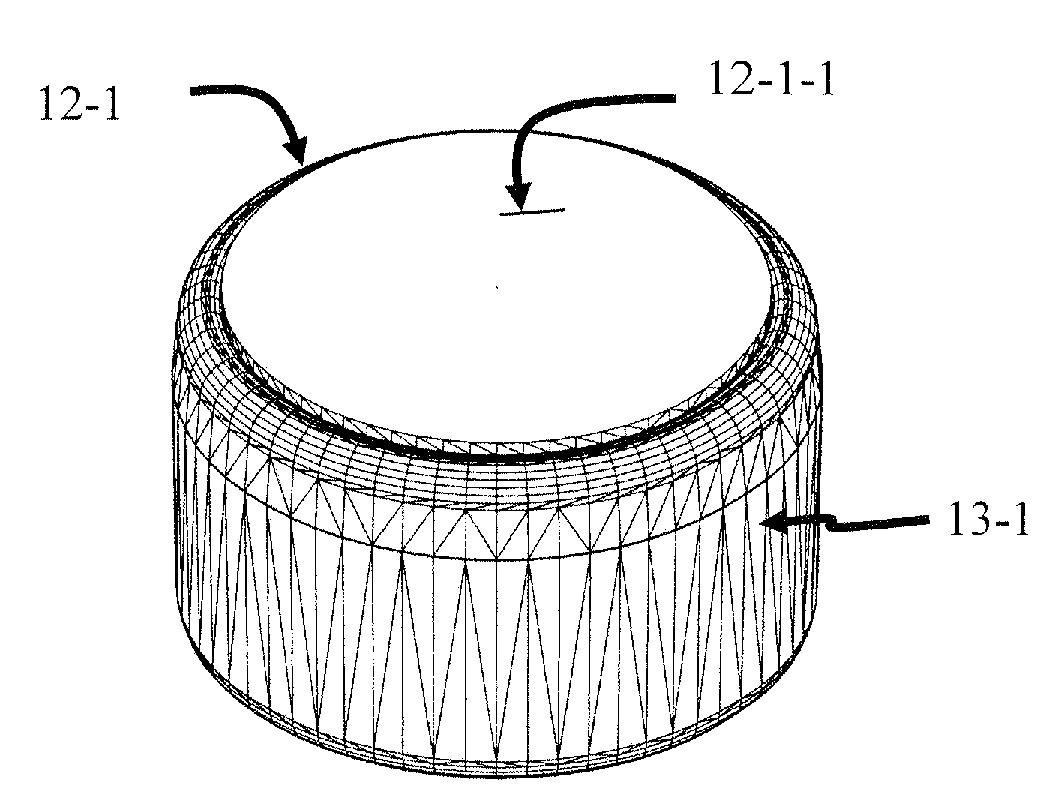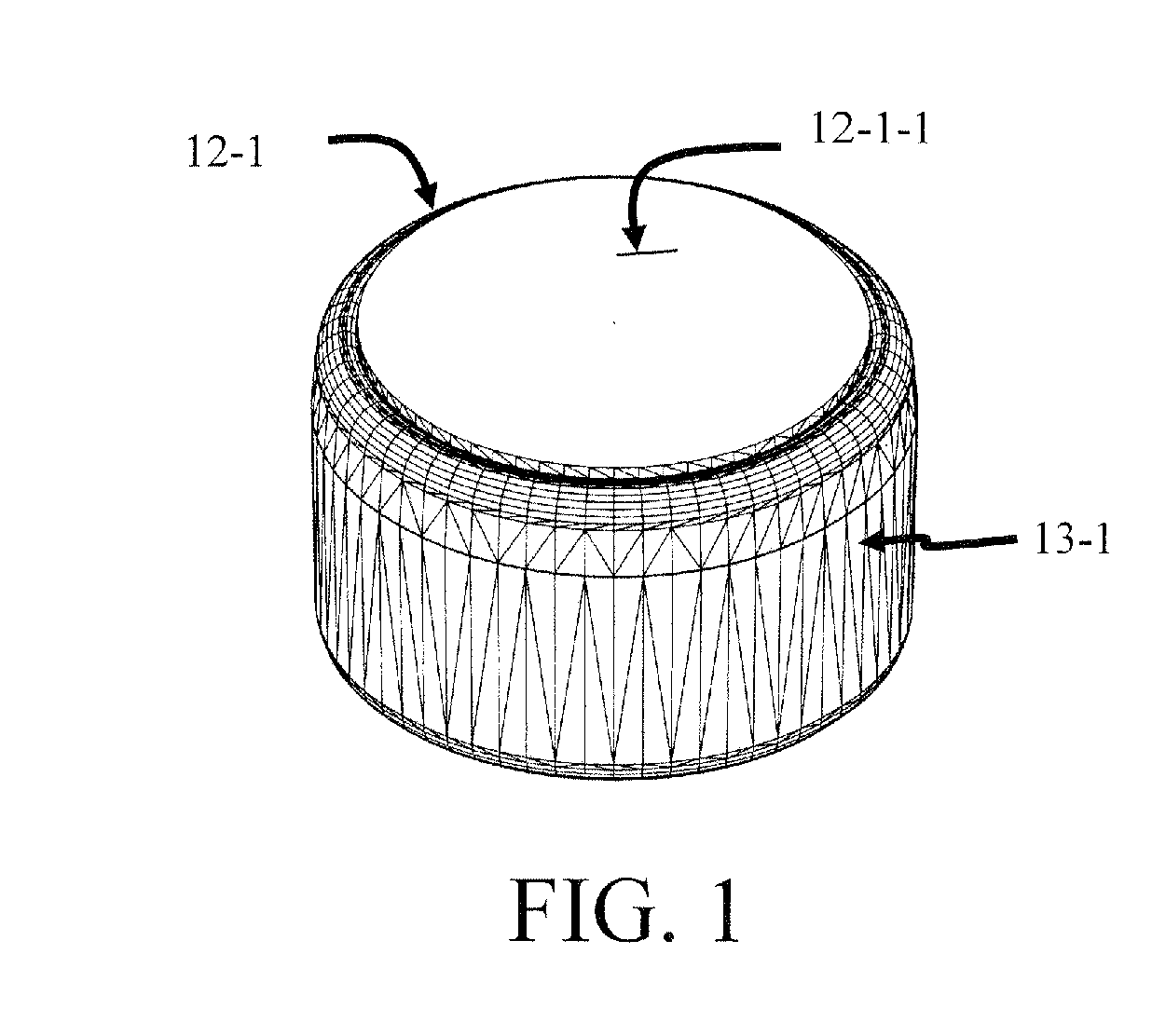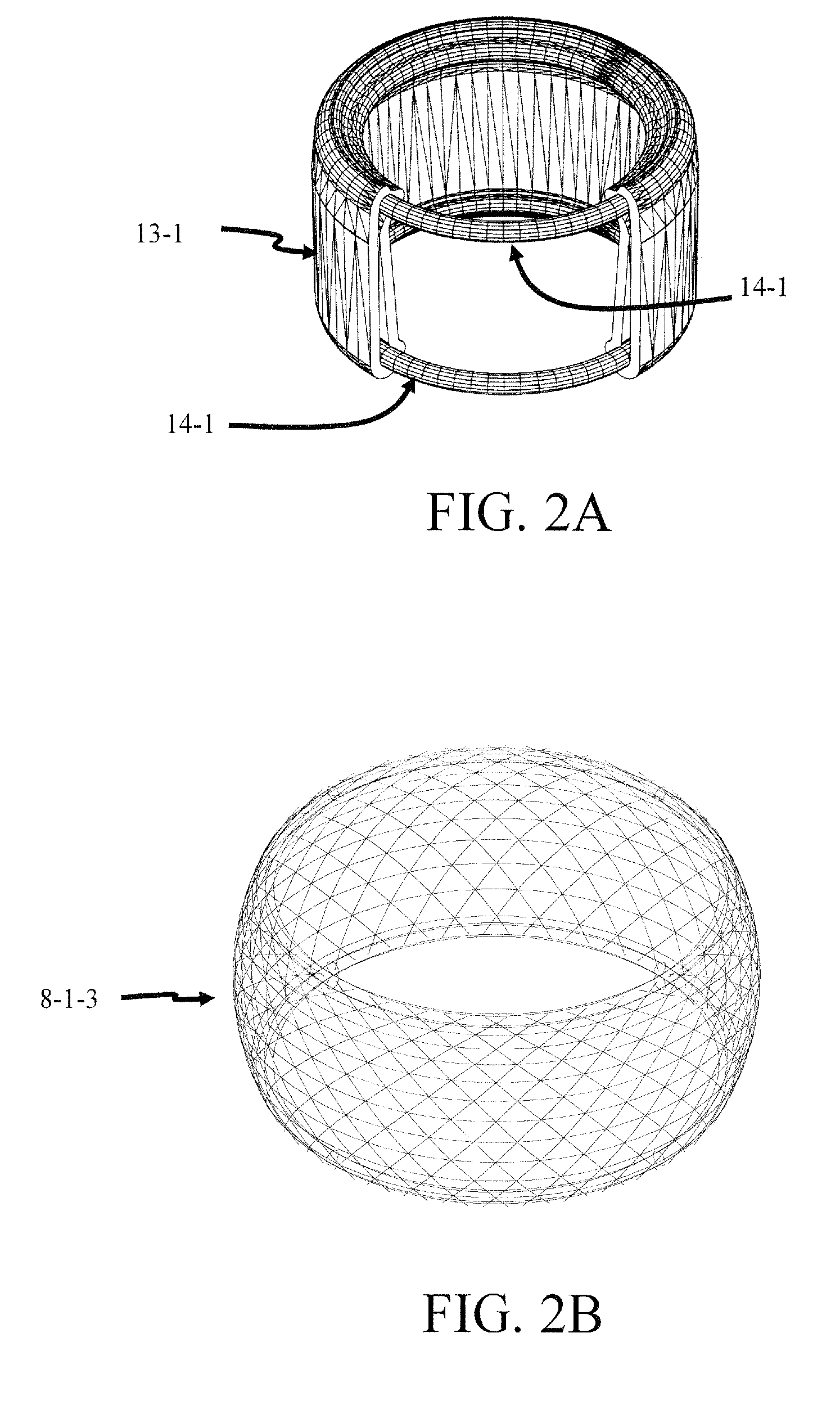Intervertebral spinal disc prosthesis
a technology for disc prosthesis and vertebrae, which is applied in the field of intervertebral disc prosthesis, can solve the problems of excessive force on the facet, drastic treatment, and inability to restore normal disc function, and achieve the effect of maintaining disc stability and integrity
- Summary
- Abstract
- Description
- Claims
- Application Information
AI Technical Summary
Benefits of technology
Problems solved by technology
Method used
Image
Examples
Embodiment Construction
[0070]The subject invention provides embodiments of intervertebral disk prostheses. More specifically, the subject invention pertains to one or more embodiments of an intervertebral disk prosthesis capable of providing up to 6 degrees of freedom.
[0071]The subject invention is particularly useful for the treatment of spinal disk herniation. However, a person with skill in the art will be able to recognize numerous other uses, medical or otherwise, that would be applicable to the devices and methods of the subject invention. Thus, while the subject application describes a use for treatment and / or removal of spinal disk herniation, other modifications apparent to a person with skill in the art and having benefit of the subject disclosure are contemplated to be within the scope of the present invention. As used in the subject application, “kinematic chain”, “kinematic linkage”, and “kinematic connection” refer to a mechanical linkage inseparably connecting the components of the device o...
PUM
| Property | Measurement | Unit |
|---|---|---|
| degrees of freedom | aaaaa | aaaaa |
| degrees of freedom | aaaaa | aaaaa |
| displacement | aaaaa | aaaaa |
Abstract
Description
Claims
Application Information
 Login to View More
Login to View More - R&D
- Intellectual Property
- Life Sciences
- Materials
- Tech Scout
- Unparalleled Data Quality
- Higher Quality Content
- 60% Fewer Hallucinations
Browse by: Latest US Patents, China's latest patents, Technical Efficacy Thesaurus, Application Domain, Technology Topic, Popular Technical Reports.
© 2025 PatSnap. All rights reserved.Legal|Privacy policy|Modern Slavery Act Transparency Statement|Sitemap|About US| Contact US: help@patsnap.com



